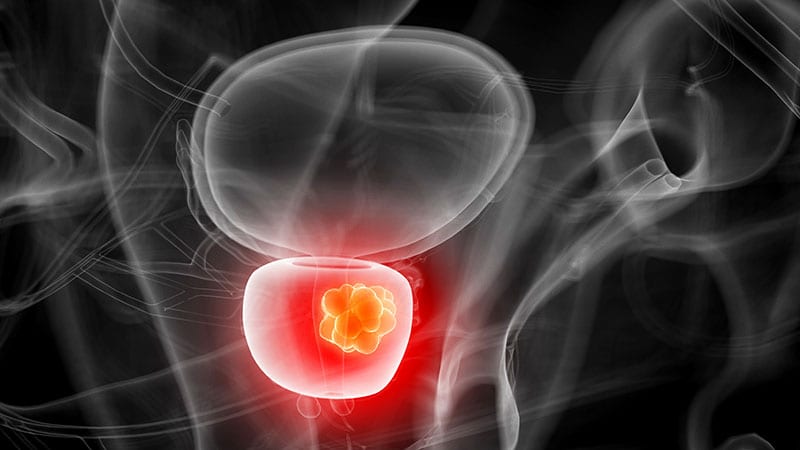Increased Side Effects of Local Therapies for Prostate Cancer
Core Concepts
Local therapies for advanced prostate cancer lead to more side effects than systemic treatments, impacting patients' quality of life.
Abstract
The article discusses a retrospective cohort study published in JAMA Network Open that focused on the side effects of local therapies for advanced prostate cancer compared to systemic treatments. Key points include:
Local therapies like radiation therapy and radical prostatectomy result in more gastrointestinal, sexual, and incontinence issues.
The study aimed to evaluate the impact of local therapy on quality of life compared to androgen deprivation therapy (ADT).
Examining side effects up to 5 years post-treatment in 5500 US veterans diagnosed with advanced prostate cancer.
Men undergoing local therapy reported higher prevalence of side effects lasting 2 to 5 years compared to systemic therapy recipients.
Notable differences in gastrointestinal issues, pain, sexual dysfunction, and urinary problems between local and systemic therapy groups.
Contradictory data compared to other studies, raising questions about the effectiveness and side effects of local therapies.
Importance of informing patients about potential side effects of local therapy for marginal survival improvements.
Variations in patient populations and treatment structures may influence study outcomes.
More Side Effects With Local Therapies for Prostate Cancer
Stats
"Men who underwent local therapy, compared with those who underwent systemic therapy, experienced more of the following symptoms: Gastrointestinal issues (odds ratio [OR], 4.08)"
"Men who underwent local therapy, compared with those who underwent systemic therapy, experienced more of the following symptoms: Pain (OR, 1.57)"
"Men who underwent local therapy, compared with those who underwent systemic therapy, experienced more of the following symptoms: Sexual dysfunction (OR, 2.96)"
"Men who underwent local therapy, compared with those who underwent systemic therapy, experienced more of the following symptoms: Urinary problems, predominantly incontinence (OR, 2.25)"
Quotes
"As practitioners, we sometimes underestimate the side effects we subject our patients to. We need to talk to our patients about the prognosis improvement that comes with side effects." - Hubert Kübler
Key Insights Distilled From
by Nadine Ecker... at www.medscape.com 01-30-2024
https://www.medscape.com/viewarticle/more-side-effects-local-therapies-prostate-cancer-2024a100022m
Deeper Inquiries
How do the side effects of local therapies for prostate cancer impact treatment decisions and patient outcomes in the long term?
The side effects of local therapies for prostate cancer, such as radiation therapy or radical prostatectomy, can have a significant impact on treatment decisions and patient outcomes in the long term. These therapies are associated with a higher prevalence of gastrointestinal issues, sexual dysfunction, pain, and urinary problems, particularly incontinence. Patients undergoing local therapy may experience these side effects for up to 5 years post-treatment, affecting their quality of life and overall well-being. The decision to opt for local therapy over systemic therapy, such as androgen deprivation therapy (ADT), is often based on the hope of improving survival rates while minimizing the side effects of prolonged ADT. However, the study findings suggest that local therapy may not necessarily lead to better outcomes in terms of side effects, as patients still reported a higher incidence of gastrointestinal and sexual issues, as well as incontinence, compared to those receiving systemic therapy.
How can healthcare providers effectively communicate the potential side effects of treatments to patients while balancing the benefits of improved survival rates?
Healthcare providers play a crucial role in effectively communicating the potential side effects of treatments to patients while balancing the benefits of improved survival rates. It is essential for providers to have open and honest discussions with patients about the expected side effects of local therapies for prostate cancer, taking into account the specific patient population and individual circumstances. Providers should educate patients about the potential long-term impact of treatment decisions on their quality of life, emphasizing the importance of informed decision-making. By presenting patients with clear and accurate information about the side effects of different treatment options, providers can help patients make well-informed choices that align with their preferences and goals.
What factors may contribute to the contradictory data on the effectiveness of local therapies in different studies, and how can these discrepancies be resolved?
Several factors may contribute to the contradictory data on the effectiveness of local therapies in different studies, leading to discrepancies in the findings. One factor is the heterogeneity of patient populations, as studies may include patients with varying disease stages, comorbidities, and treatment histories, which can influence treatment outcomes and side effect profiles. Additionally, differences in treatment protocols, follow-up procedures, and outcome measures across studies can contribute to conflicting results. To resolve these discrepancies, future research should aim for standardized study designs, including consistent patient selection criteria, treatment protocols, and outcome assessments. Collaborative efforts among researchers and institutions can help establish a more comprehensive understanding of the impact of local therapies on patient outcomes, leading to more consistent and reliable data for clinical decision-making.
0
More on Healthcare
